Let’s be real – we’re all basically living in the future now, and dash cams have gone from “nice to have” to “seriously, why don’t you have one yet?” Whether you’re stuck in city traffic or planning an epic cross-country adventure, having the best dash cam for road trips 2025 is like having a tiny lawyer sitting on your dashboard (except way cheaper and less annoying).
Everyone’s searching for the perfect dash cam these days, and honestly, the options are overwhelming. You’ve got everything from basic $50 models that’ll do the job to fancy high-resolution dash cam setups that cost more than your monthly car payment. Plus, there’s all this cool 4K dash cam tech and smart features that basically turn your car into something out of a sci-fi movie.
Don’t worry though – I’ve done the heavy lifting for you. This guide breaks down everything you need to know about dash cams in 2025, from the must-have features to the best bang-for-your-buck options. By the time you’re done reading, you’ll know exactly which dash cam will keep you covered (and maybe save your butt) on your next adventure.
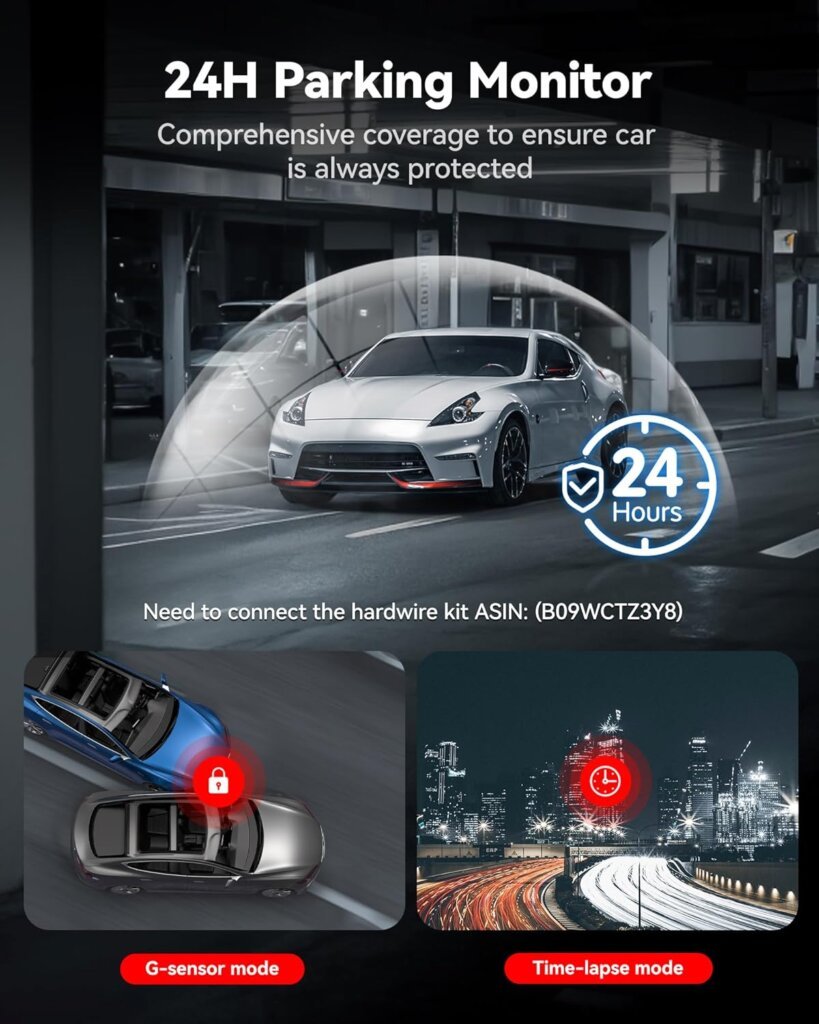
Why You Actually Need a Dash Cam in 2025
It’s Your Get-Out-of-Jail-Free Card
Here’s the thing – dash cams are basically your insurance policy against liars and scammers. When someone tries to pin an accident on you (and trust me, it happens more than you’d think), having crystal-clear video evidence is like having a superhero sidekick. Insurance companies love dash cam footage because it cuts through all the “he said, she said” drama and gets straight to the facts.
I’ve seen people save thousands in legal fees just because their dash cam caught the real story. It’s especially clutch in areas where insurance fraud is rampant – you know, those places where people seem to throw themselves at moving cars for a living.
Sleep Better at Night (Literally)
Road trips mean parking in sketchy rest stops, random hotel lots, and tourist traps where your car’s basically a sitting duck. That’s where parking mode becomes your best friend – it keeps recording even when you’re snoozing in that questionable motel, catching any idiot who thinks your car looks like an easy target.
I can’t tell you how many horror stories I’ve heard about people coming back to find their car dinged up with no way to prove what happened. With a good dash cam, you’ve got 24/7 security that never takes a coffee break.
Become a Travel Documentarian (Without Trying)
Okay, this one’s just fun. Your dash cam doesn’t just catch accidents – it captures all those “holy crap, did you see that?” moments too. That incredible sunset over the mountains, the deer that decided to play chicken with your car, or that lightning storm that looked like the apocalypse – your dash cam’s got it all recorded for posterity.
Plus, it’s pretty cool to have a travel log showing exactly where all your best footage happened. Makes for great stories later!
Your Car Gets Smarter (Even if It’s Old)
Some of the newer dash cams come packed with features that’ll make your 2010 Honda feel like a Tesla. Lane departure warnings, collision alerts – basically all the safety stuff that comes standard in fancy new cars. If you’re driving something that predates smartphones, this stuff can actually help prevent accidents before they happen.
How These Little Gadgets Actually Work
Don’t worry, it’s not rocket science. A dash cam is basically just a small camera that sticks to your windshield or dashboard and records everything while you drive. It plugs into your car’s power (usually through that cigarette lighter thing that nobody uses for cigarettes anymore), so you never have to worry about batteries dying at the worst possible moment.
Here’s the clever part: it records in loops, meaning it keeps the most recent footage and automatically deletes the old stuff unless something dramatic happens. When it detects a crash or sudden stop (thanks to a built-in G-sensor), it locks that video file so it doesn’t get erased. Pretty smart, right?
The best part? Once you set it up, you can literally forget it exists. It just does its thing in the background while you focus on not hitting things.
What to Look for When Shopping (The Actually Important Stuff)
Video Quality – Don’t Go Cheap Here
Look, if you can’t read license plates in your footage, what’s the point? You want at least 1080p Full HD – anything less is like having a security camera from 2005. Sure, it’s recording, but good luck making out any useful details.
If you’ve got the budget, go for 1440p or 4K resolution. A 4K dash cam is overkill for most people, but if you’re the type who wants to zoom in and count nose hairs in your footage, it’s worth the extra cash. Just remember, higher resolution means bigger files, which means you’ll need more storage.
And here’s something people forget – you don’t just drive during the day. Make sure your dash cam has decent night vision because Murphy’s Law says the craziest stuff always happens after dark. Look for features like bigger sensors, wide apertures, or fancy HDR tech that keeps things visible even when it’s darker than your ex’s soul.
Field of View – How Much Can You See?
You want something between 140 and 160 degrees – think of it as the Goldilocks zone of dash cam viewing. Too narrow and you miss the car that t-bones you from the side. Too wide and everything looks like you’re watching the world through a funhouse mirror.
Those super-wide 180-degree cameras might seem cool, but they distort everything so much that you can’t tell if that’s a sedan or a school bus in your footage. Stick with the middle ground.
Storage – Don’t Get Caught with Your Pants Down
Here’s a fun surprise – most dash cams don’t come with memory cards. I know, right? It’s like buying a phone without a charger. You’ll need to grab a 64GB or 128GB microSD card for regular 1080p recording, or go bigger (like 256GB) if you’re doing 4K.
Pro tip: don’t cheap out on the memory card. Get a fast one (look for U3 or V30 ratings) or you’ll end up with gaps in your recording, which is about as useful as a chocolate teapot when you actually need the footage.
The loop recording feature is clutch – it automatically overwrites old footage when you run out of space, so you don’t have to babysit it. Just remember to back up anything important, because once it’s overwritten, it’s gone forever.
G-Sensor – Your Accident Detector
This little sensor is like having a tiny paranoid friend in your camera. It detects sudden impacts, hard braking, or sharp turns and automatically locks that footage so it doesn’t get erased. The sensitivity is usually adjustable, which is great because you don’t want it freaking out every time you hit a pothole.
This is especially important on road trips where you might hit some rough roads. You want it to ignore the normal bumps but still catch actual incidents.
Parking Mode – Your Car’s Bodyguard
If your dash cam has parking mode, it’ll keep watching your car even when you’re not around. Some only record when they detect motion, others wake up when something bumps your car, and the fancy ones record a buffer before and after events (so you can see what led up to the incident).
Fair warning though – to use parking mode properly, you might need to hardwire the camera to your car’s electrical system or use a separate battery pack. It’s a bit more involved than just plugging it in, but totally worth it for the peace of mind.
GPS – Because Context Matters
GPS tracking is surprisingly useful – it records your speed and location data along with the video. This can prove you weren’t speeding (or admit that you were, so maybe don’t share that footage with your insurance company). For road trippers, it’s also cool to see exactly where all your memorable footage happened.
Size and Design – Keeping It Low-Key
The best dash cams are small enough to hide behind your rearview mirror so they don’t block your view or scream “expensive electronics inside” to potential thieves. You’ve got two main mounting options: adhesive mounts (more permanent but stable) or suction cups (easier to move but might fall off on bumpy roads).
Make sure whatever you pick can handle extreme temperatures. The inside of your car can get hot enough to cook an egg in summer, and cold enough to make polar bears complain in winter.
Budget – How Much Should You Actually Spend?
Dash cams range from about $50 to over $500, and honestly, you don’t need to break the bank to get something decent. The expensive ones have all the bells and whistles, but a solid mid-range option will do everything most people need.
Think about what features actually matter to you versus what’s just cool to have. Do you really need 4K dash cam quality, or would 1080p work just fine? Are you going to use all those smart features, or do you just want something that records reliably?
The Best Dash Cams You Can Actually Buy in 2025
I’ve tested a bunch of these things (okay, I read a lot of reviews from people who actually test them), so here are my top picks:
Best Overall: Viofo A329S
This thing is basically the iPhone of dash cams. The 4K dash cam quality at 60fps is absolutely nuts – you can zoom in and practically count eyelashes. The app is actually user-friendly (shocking, I know), and it’s got some cool tech like recording to SSDs and Wi-Fi 6 for super-fast file transfers.
Yeah, it’s pricey, but if you want the best of the best, this is it. Just heads up – the screen can be hard to see if your windshield is angled weird, but honestly, you’ll be using the app anyway.
Best Bang for Your Buck: Vantrue N4
This one’s like getting three cameras for the price of one and a half. You get front, cabin, and rear cameras all in one package, plus a screen that shows all three feeds at once. It’s perfect if you want full coverage without buying separate systems.
The rear camera wiring can be a pain to install, and some of the power-saving modes might drain your battery, but for the price, it’s hard to beat.
Best Middle Ground: 70Mai A810
If you want 4K dash cam quality without the premium price tag, this is your sweet spot. The video quality is really good, especially for reading text (like license plates), and it’s super easy to install. The app isn’t amazing, but it gets the job done.
The screen basically becomes invisible once you mount it, but that’s not really a big deal since you’ll mainly use your phone to review footage anyway.
Best Budget Pick: Car and Driver 1080P HD Dash Cam
For those on a tight budget, this little guy punches way above its weight class. You get front and rear cameras, a touchscreen, and all the basic features you need like parking mode and collision detection. It’s not fancy, but it’s reliable.
The mount might get loose on really bumpy roads, and there’s a slight color tint on the screen, but the actual recorded footage looks fine. For the price, you really can’t complain.
Best for Safety Nerds: Garmin Dash Cam Live
This one’s packed with more safety features than a helicopter parent. Forward collision warnings, lane departure alerts, and even remote viewing through cellular connectivity. It’s won a bunch of awards and comes with a memory card (finally!).
It’s expensive, and some features require subscriptions, but if you want your dash cam to actively help prevent accidents instead of just recording them, this is your pick.
Best Tiny Option: Garmin Mini 2
This thing is so small you can hide it behind your rearview mirror and forget it exists. The 1080p quality is solid, and the app is actually easy to use. Perfect if you want protection without the obvious “dash cam on board” look.
No screen means you have to use the app to set it up, and the status lights can be confusing at first, but once it’s configured, it just works.
Getting It Installed Without Losing Your Mind
Installing a dash cam isn’t brain surgery, but there are a few things to keep in mind. Mount it behind your rearview mirror if possible – it stays out of your way and is less obvious to potential thieves.
Take some time to route the power cable properly. Nobody wants wires dangling all over their dashboard like some kind of electronics octopus. Tuck them into the trim or under the upholstery for a clean look.
Test everything before you call it done. Make sure the camera angle is right, all features work, and the footage actually looks good. There’s nothing worse than finding out your dash cam was recording the ceiling for three months.
If you’re not comfortable with the wiring (especially for parking mode), just pay someone to install it. It’s usually not that expensive and saves you from potentially frying your car’s electrical system.
The Legal Stuff (Don’t Worry, It’s Mostly Good News)
Good news – dash cams are legal pretty much everywhere in the US. Bad news – every state has its own quirky rules about where you can mount them and whether you can record audio.
If you’re planning a multi-state road trip, do a quick Google search for the states you’ll be driving through. Most of the rules are common sense (don’t block your view, don’t record people without consent), but it’s worth checking.
The footage is usually admissible in court as long as you collected it legally, which makes proper installation and operation even more important.
Making Your Dash Cam Work for You Long-Term
Keep your firmware updated – manufacturers regularly release updates that fix bugs and add features. It’s like giving your dash cam a brain upgrade every few months.
Back up important footage regularly. Your dash cam’s memory card isn’t meant to be permanent storage, so save anything important to your computer or cloud storage before it gets overwritten.
Check on it occasionally to make sure it’s still working. Nothing’s worse than needing footage and finding out your dash cam stopped recording three weeks ago because the memory card died.
Is It Really Worth It?
Absolutely. Even a basic dash cam can save you way more than it costs if you ever need it. The peace of mind alone is worth the investment, especially if you do a lot of driving or long road trips.
Think of it as insurance for your insurance. When something goes wrong (and Murphy’s Law says it will), you’ll be really glad you have that footage. Plus, some insurance companies even offer discounts if you have a dash cam, so it might pay for itself over time.
Bottom Line: Just Get One Already
Look, choosing the best dash cam for road trips 2025 isn’t rocket science. Figure out your budget, decide which features actually matter to you (not just what sounds cool), and pick something from a reputable brand. Whether you go budget-friendly or splurge on a high-resolution dash cam with all the bells and whistles, the important thing is having something recording.
Your future self will thank you when you need that footage, and your current self will enjoy the peace of mind knowing you’re covered. Plus, you might catch some pretty cool stuff along the way – just think of it as a bonus travel buddy that never asks to stop for bathroom breaks.
FAQ: The Questions Everyone Actually Asks
What’s a dash cam actually for? Recording your drives so you have proof when stuff goes sideways. Also catching cool road trip moments and keeping an eye on your parked car. Basically, it’s your silent witness for everything car-related.
Do these things record when my car’s off? Many do if they have parking mode, but it usually requires special wiring or a battery pack. Check the specs before you buy if this feature matters to you.
What video quality should I get? 1080p is fine for most people – you can read license plates and see what happened. Go higher if you want to zoom in on details or just like having the best quality possible.
Will it kill my car battery? Nope, not when you’re driving. Parking mode might drain it if left on too long, but good dash cams have protections to prevent dead batteries.
Are they legal everywhere? Pretty much, but check your state’s rules about windshield mounting and audio recording. Most restrictions are just common sense stuff.
What memory card should I buy? Get a fast one (U3 or V30 rated) with at least 64GB for 1080p or 128-256GB for 4K dash cam recording. Don’t cheap out – a bad memory card can ruin everything.
What’s this G-sensor thing? It detects crashes and sudden stops, then locks that footage so it doesn’t get erased. Pretty handy when you need to prove what happened in an accident.

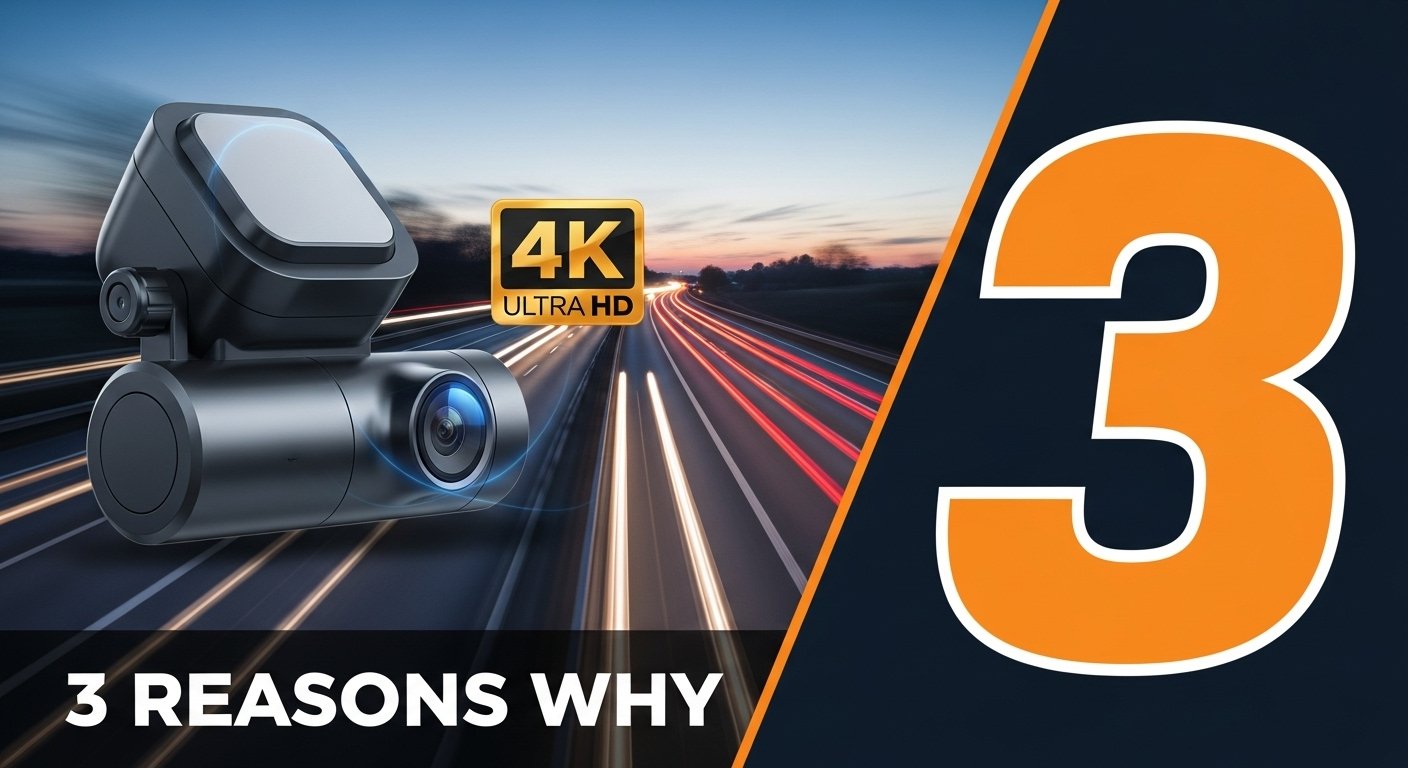
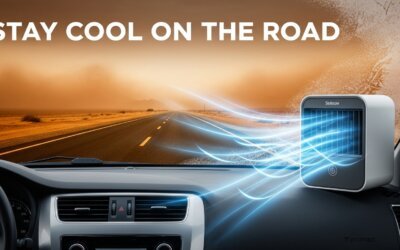
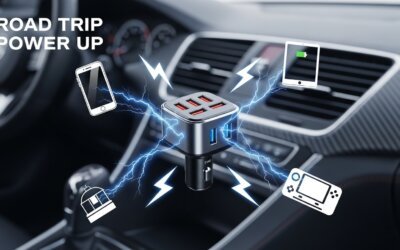
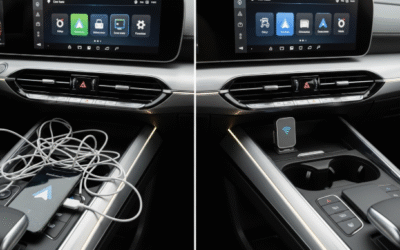
Thank youuu